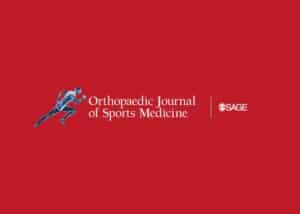
The anterior cruciate ligament (ACL) is one of the most studied structures of the human musculoskeletal system, being the subject of many anatomic and biomechanical studies. While treatment options for complete ruptures of the ACL are well studied, partial ACL tears remain more nebulous in their postinjury treatment course. Partial ACL tears were first described almost 5 decades ago. However, since the initial description, there remains no consensus on the classification for these injuries, and the optimal treatment continues to be a subject of considerable debate. Complete tears of the ACL can result in immediate anteroposterior and rotational knee instability. Anterior cruciate ligament reconstruction (ACLR) has been reported to achieve a near-native biomechanical function in symptomatic patients. However, when the ACL is partially torn, the natural evolution of these lesions is poorly understood and thus, the evidence regarding treatment options is limited.
Unlike other ligaments of the knee, such as the posterior cruciate ligament (PCL) and medial collateral ligament (MCL), the ACL possesses limited intrinsic capacity for spontaneous healing after an injury. Early reports of direct suture repair of the ACL culminated in failure in 40% to 100% of cases. In part, the poor healing capacity of the ACL has been speculated to be a consequence of its intraarticular location and a thin synovial membrane. Generally, ligamentous injuries trigger the release of proinflammatory cytokines that initiate formation of a fibrin-platelet clot scaffold that is rapidly replaced by granulation tissue, and weeks later by immature, parallel collagen fibers. However, several studies have demonstrated the inhibitory properties of the intra-articular synovial fluid of the knee on fibrinplatelet clot formation and ACL fibroblast migration in patients suffering ACL injury. Thus, the capacity for spontaneous repair and remodeling after ACL injury is relatively poor, thereby requiring surgical reconstruction or augmentation to recover stability in many cases.
This clearly induces a dilemma in the treatment of partial ACL injuries. Despite being the historical standard of care for complete ACL disruptions, ACLR procedures have been reported to potentially result in diminished proprioception, postoperative muscular weakness, inability to fully restore normal kinematics, donor site morbidity, and possible premature osteoarthritis (OA). Biau reported in a meta-analysis that only 40% of patients who had an ACLR achieved full recovery independent of the surgical technique, and Kartus reported that 65% of patients had anterior knee pain and disturbance of anterior sensitivity caused by intraoperative injury to the infrapatellar nerve(s) after ACLR with patellar tendon autograft. These findings are of particular concern in combination with the findings of Barenius, which showed that 57% and 18% of patients will develop osteoarthritis at 14-year follow-up in the ACL reconstructed knee and in the contralateral knee, respectively. Zhou evaluated knee proprioception with a passive reproduction test and isokinetic strength in 36 patients who had their ACL reconstructed with semitendinosus/gracilis grafts (reconstructed group: 6 months after surgery) and 13 healthy adults without any knee injury. They reported a significant difference in proprioception between the reconstructed and control groups and concluded that impaired knee proprioception is observed 6 months after ACLR. Many studies have shown significantly greater translational and rotational laxity of the reconstructed knees relative to the contralateral uninjured sides, regardless of the graft type.
Additionally, high-demand activities among patients with ACLR reportedly lead to increased tibial rotation and impaired neuromuscular control that potentially results in an increase of cartilage load and thus higher risk of reinjury. Shah in a case series of 49 National Football League (NFL) athletes who had undergone primary ACLR, concluded that the return to play after ACLR in NFL football players was lower than previously perceived; only 63% of NFL athletes returned to NFL game play at an average of 10.8 months after surgery. In contrast, a higher rate of return to play was found in recreational athletes; Ardern in a systematic review found that an average of 82% of athletes returned to sports in this group.
Full Article: Biologic Approaches for the Treatment of Partial Tears of the Anterior Cruciate Ligament
